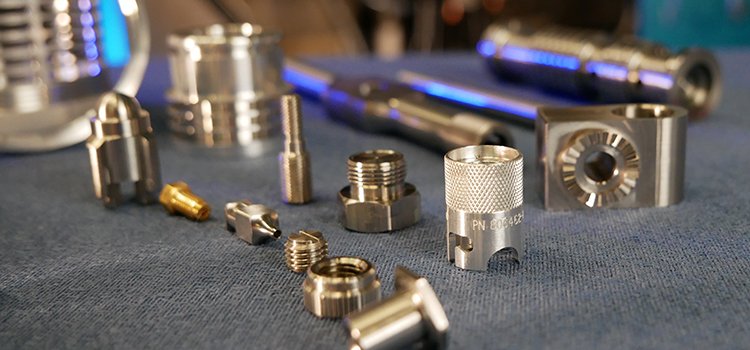What Is OEM Manufacturing?
OEM (Original Equipment Manufacturer) manufacturing has a key role to play in the ever-growing manufacturing sector. OEMs are involved in producing high-quality products, products, and components, especially for brands. Industries outsource the manufacturing of spare parts and engineering components to OEMs, who maintain strict quality standards to meet the individual requirements of brands.
Understanding OEM Manufacturing
OEM manufacturing refers to manufacturers, producing different products ranging from components to entire products for consumer brands. They sell their products to consumer brands instead of their own names. The brands further sell OEM products to end users. Brands rely on the quality of OEM manufacturing and sell the products with their guarantee.
How OEM Manufacturing Works?
OEM manufacturing involves following the product specifications provided by the brands. The manufacturers follow a systematic pattern:
Design & Specification: The brand shares details of designs and specifications of products they want OEMs to manufacture.
Prototyping & Sampling: OEMs develop prototypes of products matching the specifications shared by brands and send samples for approval.
Production & Assembly: Approved samples are sent to OEMs for mass production of products. OEMs ensure quality control at every stage of production.
Branding & Packaging: Finished products branded with logos of the brand’s products belong to and sent to the respective brands for marketing.
Shipping & Distribution: OEMs ship finished goods to brands the products belong to or to the end users, depending on the agreement with the brands.
OEM vs. ODM vs. Aftermarket Manufacturing
OEM is often considered a synonym for ODM (Original Design Manufacturers) and Aftermarket Manufacturers. However, they are different businesses. Also, it is important to understand the difference between OEM, ODM, and Aftermarket Manufacturers.
OEM: OEM is an outsourced manufacturer producing goods for brands. Here, it is necessary to mention that OEM isn’t a third-party manufacturer.
ODM: The manufacturer is the designer and manufacturer. However, the ODM products are sold under different brand names.
Aftermarket: Third-party manufacturers producing the most demanding products under different names. Aftermarket Manufacturers copy the designs of established brands.
Advantages of OEM Manufacturing
- Cost Efficiency: OEMs work for different brands. They charge for products, and cost involves material, labor, and resources. Brands save on infrastructure, labor, and raw materials.
- High-Quality Production: OEMs invest in infrastructure development, technology, talent, and quality materials. Since they work with different brands, they understand the individual needs of brands and regulatory compliance with product designs, features, and functionalities.
- Faster Time-to-Market: OEM manufacturing speeds up the production time, making it faster for brands to launch their products before others.
- Focus on Core Competencies: OEM manufacturing allows brands to focus on improving the product design and marketing.
- Scalability: OEM manufacturing handles fluctuations in production in a hassle-free manner. Brands can scale their operations according to demand.
Challenges in OEM Manufacturing
Here’re the challenges brands face with OEM manufacturing
- Quality Control Issues: Inconsistency in product design and quality could lead to serious reputational damage to brands. Inexperienced OEMs could lose track of product monitoring.
- Dependency on Suppliers: Brands become dependent of outsourced suppliers to maintain supplies of their fast-moving goods.
- Intellectual Property Risks: Sharing original design with an outsider increases the risk of theft or replication.
- Limited Customization: OEMs have their limitations such as complex design modifications and bulk production.
How to Choose the Right OEM Manufacturer?
Selecting the right OEM is necessary for the success of a brand because the OEM is held responsible for maintaining consistency in production. Consider the following factors to choose the right OEM manufacturer.
- Reputation & Experience: Research track record, client testimonials, and industry experience of OEMs.
- Certifications & Compliance: Select OEMs with ISO, FDA, and other certifications to ensure regulatory compliance.
- Production Capacity & Scalability: Evaluate the production capability and scalability of the OEM you want to outsource your production.
- Cost & Pricing Structure: Compare pricing model of various OEMs to find the right manufacturer that can provide quality products at an affordable price.
Future of OEM Manufacturing
OEM manufacturing has entered the next level where it is guided by technology, specially AI, robotics, and machine learning. Here’re the highlights of future OEM manufacturing:
- Automation & AI: AI-driven quality control will improve the workflow and reduce the errors to zero.
- Sustainable Manufacturing: The future of OEM manufacturing lies in sustainable practices. The use of renewable materials will minimize waste.
- Customization & Personalization: 3D printing will take the center stage in OEM manufacturing. It will allow product customization to the highest level.
Conclusion
OEM manufacturing plays a crucial role in the global manufacturing industry. It enables brands to use their creativity and produce quality consumer goods. Also, it helps brands meet the increasing demand for popular products. Like other businesses, OEM manufacturing also has challenges, but careful selection of OEM partners can ensure long-term success.


